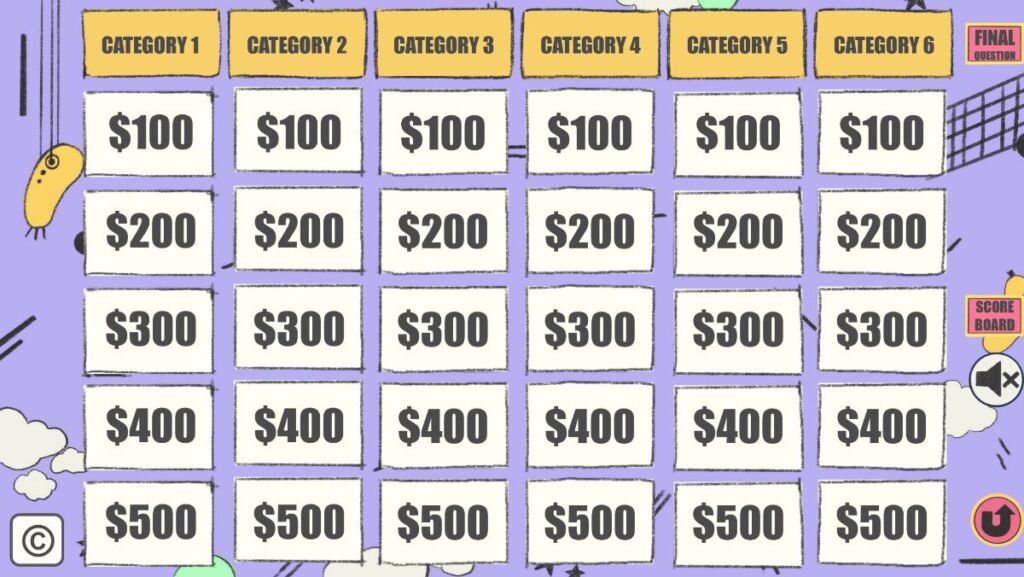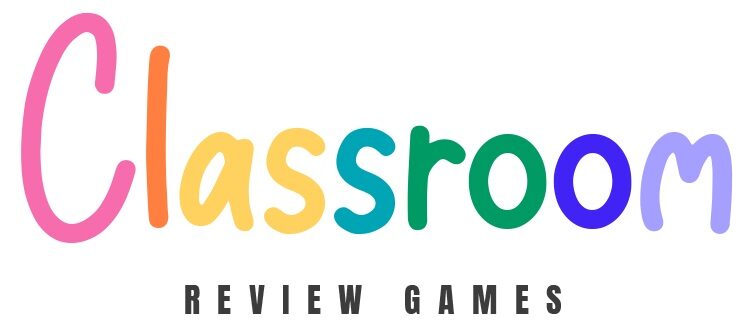19 Math Review Games for All Grades
Math games are a great way to review math concepts, get everyone involved, and make learning fun. They work well for different ways of learning and can be changed to fit students of various grades and abilities. I put together a list of some popular math games and explain what you need for each one and how to play them to get the most learning out of them.
1. Bingo
Materials Needed:
- Bingo cards with math problems
- Markers or chips
- A set of questions or problems with answers that match the Bingo cards
How to Play:
Bingo is a classic game that can be easily adapted for math review. Instead of numbers, use math problems on the Bingo cards. When you call out a question or display a problem, students solve it and mark the corresponding answer on their cards. The first student to get a row, column, or diagonal of correct answers and shouts “Bingo!” wins.
2. Sticky Notes
Materials Needed:
- Sticky notes
- Pen or marker
- A space on the wall or board to place notes
How to Play:
Write math problems on sticky notes and place them on a board or wall. Students take turns choosing a note, solving the problem, and then explaining their solution to the class. This game encourages participation and allows students to learn from each other’s problem-solving strategies.
3. Raffle Ticket
Materials Needed:
- Raffle tickets (or small pieces of paper)
- A container for the tickets
- Math problems for students to solve
How to Play:
Give students a raffle ticket for every math problem they solve correctly. At the end of the review session, draw tickets from the container to pick a winner for a small prize. This game motivates students to participate and solve as many problems as they can.
4. Tic Tac Toe
Materials Needed:
- A Tic Tac Toe grid on the board or paper
- Math problems for each square
How to Play:
Divide the class into two teams. Each square of the Tic Tac Toe grid contains a math problem. A team chooses a square and solves the problem. If correct, they mark the square with their team’s symbol (X or O). The game continues until one team wins by completing a row, column, or diagonal.
5. Trashket Ball

Materials Needed:
- Trashket Ball game template
- A trash can or basket
- A soft ball or paper ball
- Math problems for students to solve
How to Play:
Students solve math problems to earn a chance to throw a paper ball into a trash can or basket. Points are awarded for correct answers and successful shots. This game is great for kinesthetic learners and adds an element of physical activity to math review.
6. Math Baseball
Materials Needed:
- Bases marked on the floor or ground
- A set of math problems categorized by difficulty
How to Play:
Students are divided into teams, and each base represents a level of difficulty for math problems (single, double, triple, home run). A correct answer allows the student to “run” to the corresponding base, scoring points for their team. This game encourages teamwork and strategic thinking.
7. Math Invasion
Materials Needed:
- Flashcards with math problems
- A designated “invasion” area
How to Play:
Students must solve math problems from flashcards to stop an “invasion.” Each correct answer prevents the invaders from advancing. The game can be themed around protecting a city, planet, or treasure to make it more engaging.
8. Scavenger Hunt
Materials Needed:
- Math problem cards hidden around the classroom or a designated area
- Answer sheets
How to Play:
Students search for hidden math problem cards and solve them. Each card has a clue leading to the next problem. The first student or team to complete all problems and return with the correct answers wins.
9. War
Materials Needed:
- A deck of cards with math problems or standard playing cards
- A set of rules for comparing answers or card values
How to Play:
Similar to the traditional card game “War,” students draw cards and solve the problems on them. The student with the higher answer (or card value) wins the round. This game can be adapted for various math topics and difficulty levels.
10. Around the Block
Materials Needed:
- Question cards placed around the classroom or outdoor area
- Answer sheets
How to Play:
Students move around the room or designated area, solving math problems on question cards. This can be timed, with students trying to solve as many problems as possible within the limit, or structured as a circuit, where each correct answer leads to the next problem.
11. Card Games
Materials Needed:
- A deck of cards with math problems or standard playing cards
- Game rules that incorporate math problem-solving
How to Play:
There are numerous card games that can be adapted for math review, such as “Math Rummy,” “Math War,” or “Make Ten.” Use the card values for computations, with the game rules requiring players to solve problems or reach certain numerical goals to win.
12. Flashcard Race
Materials Needed:
- Flashcards with math problems
- A timer
How to Play:
Students compete to solve as many math problems as possible within a set time limit. Flashcards can be used individually or in teams, and the game can be adapted for different topics and difficulty levels.
13. Jeopardy

Materials Needed:
- Jeopardy game template with categories and point values
- Questions for each category
How to Play:
Students choose questions from different categories, with each question having a point value. Correct answers earn points, and the student or team with the most points at the end of the game wins. This format is great for reviewing a wide range of topics.
14. Kahoot
Materials Needed:
- Computers or mobile devices with internet access
- A Kahoot account to create and run the quiz
How to Play:
Kahoot is a game-based learning platform where you can create interactive quizzes. Students use their devices to answer questions in real-time, with points awarded for correct answers and speed. Kahoot is excellent for engaging students and can accommodate large classes.
15. Matching Game
Materials Needed:
- Cards with math problems and corresponding answers
How to Play:
Spread out cards face down. Students take turns flipping two cards at a time, trying to find matching problem-answer pairs. This game is excellent for memory and reinforces math concepts through repetition.
16. Math Checkers
Materials Needed:
- A checkers board with math problems on each square
- Checkers pieces
How to Play:
Each time a player moves to a square, they must solve the math problem on that square. If the answer is correct, the move is made; otherwise, the piece returns to its original position. This adds an educational twist to the classic game of checkers.
17. Mazes
Materials Needed:
- Maze worksheets with math problems along the paths
How to Play:
Students navigate through a maze, solving math problems along the way. Each correct answer leads them closer to the exit. Mazes can be themed and tailored to specific math topics, making them a versatile review tool.
18. Pick Your Points
Materials Needed:
- Questions of varying difficulty, each assigned a point value
How to Play:
Students choose questions based on the point value they wish to attempt, with harder questions worth more points. This allows students to challenge themselves according to their confidence level in the subject matter.
19. Old Math Guy
Materials Needed:
- A set of math problems
- A character or mascot (the “Old Math Guy”)
How to Play:
The “Old Math Guy” presents math challenges to students. They can be themed puzzles or problems that students must solve, possibly with hints or tips provided by the character. This adds a storytelling element to math review, making it more engaging for students.

